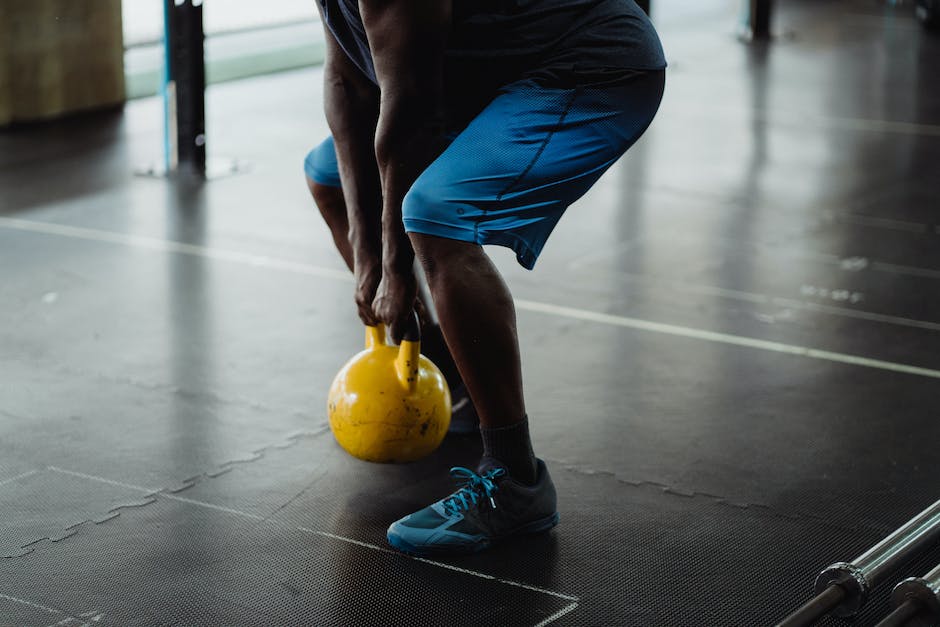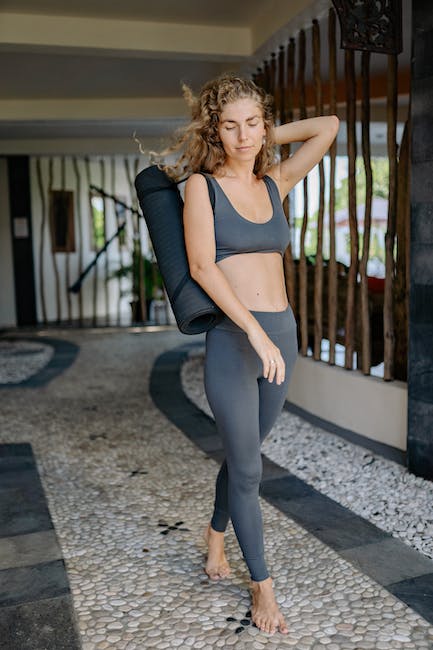
Swimming: The Ultimate Fitness Workout!
Feeling bored of your regular workout routine? It’s time to spice things up and give swimming a try! Swimming is a great way to get fit because it works almost every muscle in your body and has the added bonus of being an enjoyable activity. In this article, we’ll dig into all the benefits of swimming, why it’s the ultimate workout, and some tips to help you make the most of it. So get ready to hit the pool and start building up your fitness!
List of Content
- 1. What is Swimming?
- 2. Benefits of Swimming
- 3. Who Should Swim?
- 4. Types of Swimming Exercises
- 5. How To Get Started
- 6. The Takeaway
- You Ask, I answer

1. What is Swimming?
Swimming is an enjoyable physical activity that can be used to stay fit and healthy. It is a great way to get your body moving, challenge your muscles, and burn calories. It is recommended that adults swim at least twice a week to improve health and well-being.
There are a variety of strokes used to swim, including:
- Freestyle
- Backstroke
- Breaststroke
- Butterfly
Freestyle is the most common stroke, although the other strokes can be used as variations to challenge your body and muscles. Swimming is also a great cardiovascular exercise in which your breathing is controlled and your movement is continuous.
Swimming is perfect for any fitness level, as you can adjust the intensity and distance of your swim to match your personal goals and ambitions. Whether you’re swimming to improve your overall fitness, or to increase your swim speed and agility, swimming is a fantastic form of exercise.
Swimming can be performed indoors in a pool or outdoors in natural bodies of water such as lakes and oceans. Both types of water can lead to an enjoyable and rewarding workout.

2. Benefits of Swimming
Swimming is an incredibly versatile form of exercise that can provide a wide range of benefits. Here are just a few.
1. Cardio exercise:Swimming is an excellent form of cardio exercise, and if done regularly, it can improve your overall cardiovascular health. It is low-impact, meaning it is gentle on your joints and hips, and it is also a great way to burn calories.
2. Stress relief:Swimming can be very relaxing and it can help to reduce and manage stress levels. Not only this, but it is a great way to find some quality ‘me-time’. It is an incredibly calming activity that can keep you feeling chilled throughout the day.
3. Builds core strength:Swimming is an excellent way to develop core strength as it requires a lot of energy and focus. It is also great for muscles throughout your body, particularly the lower back, hips and shoulder muscles.
4. Fun and sociable:Swimming can be incredibly fun, and it can also be a great way to socialise. Taking your training buddies down to the pool or joining swimming clubs can be a great way to make new friends and stay motivated.
- Cardio exercise
- Stress relief
- Builds core strength
- Fun and sociable
3. Who Should Swim?
Swimming can be great for people of all ages and abilities. It’s a form of exercise which can be a great way to stay healthy and have fun in the water. From a few laps in the pool to competitive swimming races, here are a few people who should think about taking up swimming.
Kids
Children from as young as 5 can start swimming if they feel comfortable. Swimming helps to build confidence in the water, as well as being a great way to stay active and keep fit. Swimming can help with sleep, mental health, and also coordination and strength.
Adults
- Are looking for a new form of exercise
- Want to challenge themselves
- Struggle with joint pain and mobility
- Looking for a way to relax and destress
Adults looking for a new way to stay fit and active, or if you’re looking for a low-impact exercise, swimming is an ideal choice. Swimming also supports mental health, and helps reduce stress while challenging the body. It can even be used as a form of physical therapy, helping with joint pain and mobility.
Seniors
Swimming can be beneficial for seniors looking to stay active and fit, whilst allowing for a low-impact exercise. Swimming can help to improve balance, reduce the risk of falls, improve your social life, and naturally reduces blood pressure. And of course, it’s a great way to relax and destress!
4. Types of Swimming Exercises
Swimming exercises give you the opportunity to benefit from intense or light workouts. It’s a great way to stay fit and increase your cardiovascular endurance. No matter your preference, there are plenty of different swimming exercises for you to choose from.
Lap Swimming
Lap swimming is the most popular type of swimming exercise. It involves swimming laps in a pool for an extended amount of time. You can do lap swimming at varying speeds according to your fitness level. For beginners, it’s best to take it slow while gradually increasing the number of laps that you swim periodically.
Aqua Aerobics
Aqua aerobics is a type of swimming exercise that incorporates stretching, jumping, and aerobic movements. This type of exercise is great for weight loss, muscle toning, and improved balance. You can perform it at different levels of intensity, and most gyms and leisure centers offer it as an activity.
Pool Racing
Pool racing is a type of swimming exercise where participants compete against each other to reach the finish line as quickly as possible. Whether it’s between two or more people, races can involve swimming lengths or open water events. It offers a great opportunity to improve your time, as well as your competitive edge.
Submarine Swimming
Submarine swimming is an exercise intended to increase your lung capacity. It is done by holding your breath and swimming under water for as long as possible. This type of swimming exercise takes time and practice to master, but with time you will be able to stay underwater longer and even reach depths of 2 meters!
5. How To Get Started
1. Gather Materials
Before you jump into creating whatever it is you plan to make, be sure to gather all the necessary materials and tools. Make a list beforehand and determine what you need to do to get them. This step is the foundation for your project.
2. Research
Do some research to learn more about the project you’re about to create. Resources like the internet, tutorials, YouTube videos and blogs can all be great starting points. By doing a bit of digging, you’ll have a better idea of what you’ll need.
3. Experiment
Once you have all the materials, the next step is to start experimenting. Try your hand at different techniques and techniques to build up your confidence. This is the best part of the process and should be the most enjoyable.
4. Execute
When you’re comfortable with your new skills, it’s time to put them into practice. Now that you’ve got a good idea of the material and the style you want to use, it’s time to get started. Follow the research, experiment and execute steps until you’re satisfied with the end result.
Key Takeaways
- Gather all the needed materials and tools before starting a project.
- Research the project and become familiar with the process.
- Experiment and try out different techniques.
- Execute the project and follow up until you’re satisfied with the end result.
6. The Takeaway
Acknowledge Your Other Commitments
It can be easy to take on too much work and end up overwhelmed. Keep your workload manageable by making a list and sticking to it, freeing up time for yourself and family. That way you’ll be much more productive and less stressed.
Prioritize Your Projects
Determine which tasks are most important and tackle them first. Delegating or outsourcing some of your work can also help to make sure everything gets done. By doing this, no job will be left unfinished and you can rest easy knowing your work is up to standard.
Set Deadlines and Take Breaks
Allow yourself reasonable completion dates for each task and be sure to take regular breaks – we all need time to rejuvenate now and then. That way, when a difficult project arises, you have the resources to finish it without losing your energy and enthusiasm.
Be Mindful of Your Goals
Always keep your goals in mind and take note of how each task will contribute to reaching them. That way, when you feel like you’ve hit the wall, you can look back and remember why you started in the first place, refuelling your drive and getting the task done.
Use these tips and you’ll find that you can take on tasks more easily and with a greater degree of success, helping you to reach your goals faster.
You Ask, I answer
Q: What kind of workout does swimming provide?
A: Swimming is a great full-body workout that offers aerobic, strength, and flexibility benefits. Swimming works all of your major muscle groups which provides muscle tone, improved posture, and balance. Its low-impact nature is also an added bonus that puts less stress on the body, making it an effective workout for people of any age and fitness level.
Q: Are there any health benefits to swimming?
A: Absolutely! Swimming is an excellent way to reduce blood pressure, lower cholesterol, and control weight. It can also help to improve cardiovascular endurance, flexibility, and lung capacity, as well as reduce the risk of chronic medical conditions such as diabetes and arthritis.
Q: How often should I swim for maximum results?
A: Generally speaking, swimming three to five times a week for 30 to 45 minutes is considered to be sufficient for receiving the best results of any fitness workout. However, as fitness levels and goals increase, so are the recommended frequency and intensity of your swim sessions.
Swimming is one of the most advantageous and enjoyable fitness workouts you can find! So don’t wait to take the plunge and break a sweat in the pool. Before you know it, you’ll be feeling the incredible workout benefits of swimming!


